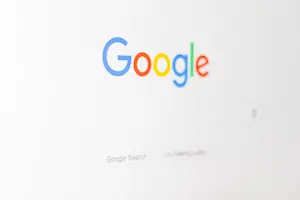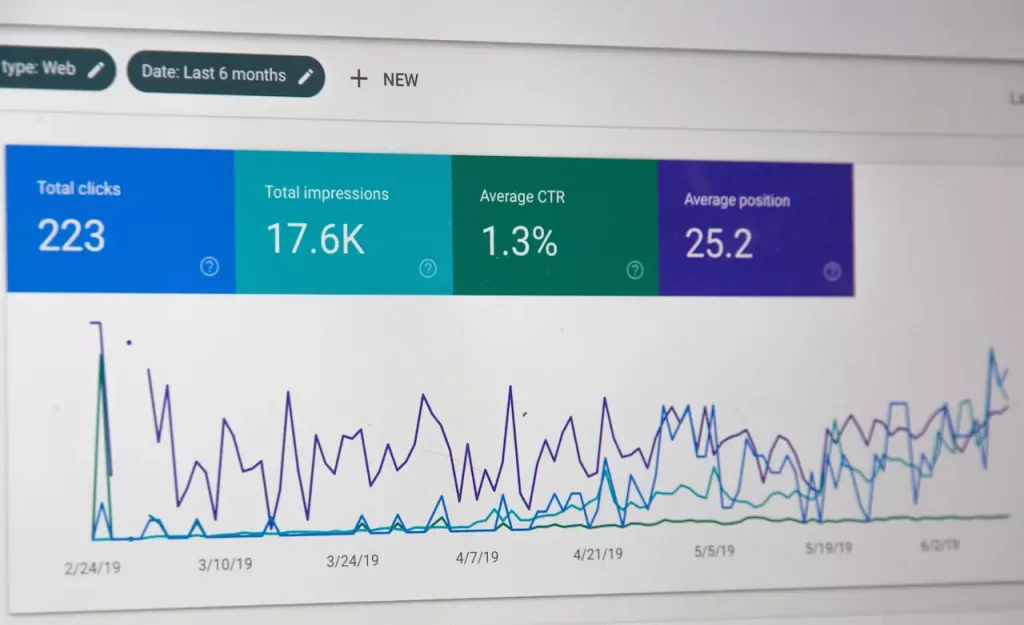What makes a good website in 2022
In 2022, who decides what a good website is?
The answer is the same as it was last year and a decade before that: the user does. The person who visits your site should:
- Feel welcome.
- Be able to navigate your content easily
- Understand what you are about within seconds
But there’s more to it than that. So many things go into making a successful website. In this post, you’ll discover the most important…
[toc]
What do you need to build a good website?
Websites are one of the most important marketing tools a business can have. They allow companies to present themselves as credible, professional and engaging to the online prospects they hope to attract.
That means websites are more than the sum of their parts. It’s not enough to snap up your domain name, buy the most expensive host you can find and install the first WordPress theme that catches your eye.
For your site to succeed, you need a well-thought-out plan from the get-go.
Your website is the online version of your storefront and it should be as inviting to customers as a Christmas window. So when you’re building your business site, you need to consider the aspects below. (They’ll be worth it, even if they do have you wondering how websites got so expensive.)
1. Design and function

Your website is the first impression prospects have about your company. You need to take that seriously. A well-designed site will go a long way to:
- Attracting more visitors
- Getting them to stay on your page longer
- Google rewards this
- The more time they spend with you, the more they are exposed to your marketing. That means the more chance of converting them into customers.
There’s nothing worse than scrolling through a site cluttered with gaudy design elements and distracting ads. Instead, having a sophisticated and minimalist approach to your web design ensures your brand message remains the focal point of your website.
The site must also load quickly and function without errors. A poorly constructed site with a snail-like load time will frustrate your users. This will drive prospects into the arms of your competitors.
Every page on your website should work like a charm. Ensure your site is compliant with web standards. Test your site frequently for speed-related or functionality issues.
2. Easy to use
What makes a great web browsing experience isn’t just how easy it is to get where you want to go. It’s also how easy it is to stay once you’ve arrived. No one wants to spend hours on a site searching for what they want.
Clean, logical navigation is a must for any site. Make navigation easy by using consistent layouts across the site. This will allow users to move around with ease. Make sure each page has a hierarchy that feels natural and follows user expectations.
Make your site accessible to all visitors, including those who know exactly what they’re looking for or those just browsing.
Offer visitors an easy-to-use search tool so it won’t take them forever to find what they want.
Provide related content suggestions to keep your visitors’ interest piqued.
3. Quality content
Most readers don’t have the patience for long or difficult content. So keep your sentences short and impactful if you want your readers to stay engaged.
Avoid industry jargon and corporatespeak. Nobody understands your terminology except for other people in your field. Think otherwise and you might end up alienating your visitors.
When visitors arrive on a web page, they should feel welcomed and at ease with what is being presented to them. They won’t feel that way if they don’t understand what you’re saying.
4. Easily available contact and location details

Having potential prospects leave your site because they couldn’t figure out how to contact you should be your worst nightmare. Make it easy for prospects by having several methods of contact on your website. Include your phone number, email address, social media accounts and a Contact Us form.
If you have a physical location, throw in a Google Map.
Ensure all your contact details are clearly visible (and not buried) on every page on your site. Or at least have them on the Contact Us page.
5. Clear calls to action
Humans are creatures of habit, and there’s nothing more comforting to us than doing nothing. So unless your website promotes specific calls to action, your visitors are likely to do what they do best: nothing.
Have you ever been on a site and thought to yourself, “What am I supposed to do here?”
It’s important that your website doesn’t make your visitors feel the same way. Make the purpose of your site clear to your visitors. And once you’ve drawn their attention, guide them towards the next steps by including calls to action on every page of your site.
6. Optimise for search and social web
Search engine optimisation (SEO) is a must when considering how successful you want your site to be. If prospects can’t find your site when browsing the Internet, you won’t get any traffic at all.

Here are some tips for optimising your SEO for Google and other search engines:
- Label every page with page titles and meta tags. Add captions and alt text to every image.
- Know the keywords that people search for and include them in your content.
- Use keywords in your website links.
- Keep your site optimised with Cascading Style Sheets. Clear unnecessary HTML code and maximise the readability of your text.
- Make your content easy to share by adding sharing links to your website.
There are more tips in our post on SEO Copywriting 101.
What makes a good website design?
The statistics on the importance of web design are mind-boggling. It turns out that 75% of prospects judge the credibility of a business through its website design. You could be ISO certified, multi-award winning and a national icon. But If your web design is not up to standard, you risk losing 3 out of 4 potential customers.
A good web design involves many elements. Of course, there are all the common graphic design aspects:
- Colour
- Quality and appeal of images
- Fonts
- Graphical effects
But you’ll also need to create a site based on the information your visitors want to see. This means not only designing an attractive appearance, but also providing easily accessible content that is presented in a helpful way.
There are no hard and fast rules for what makes a good website design (no one wants to be told “this is exactly what you must do”). But here are some things that might be useful to think about when designing your site…

1. Colour
The smart use of colours in your web design can impact how your customers feel about your brand.
Keep your colour palette limited to no more than five colours. That will avoid a garish colour scheme. A good rule of thumb is to use compatible colour combinations. They improve user experience and increase site engagement.
2. Typography
The typography or fonts on your website is as an important visual cue to convey the voice and personality of your brand.
Use a maximum of three website fonts to convey professionalism and creativity. Any more and you might remind the reader of a poster taped to a lamppost.

3. Imagery
Imagery includes the photography, illustration, video and graphics that you use on your site.
Humans are visual creatures, which is why the information that first catches our eye tends to be visual. Using high-quality images will give your site a more professional appearance. It’ll also help clients feel more confident in you and your business.
4. Site navigation
A website’s navigation arguably serves as its most critical user-interface component. If you make your site too confusing, you’ll drive customers to your competitors that have an easier-to-use layout.

A simple, intuitive and consistent design on every page will make it easier to navigate your site.
5. Layout
It turns out that certain parts of a web page draw more attention than others. People tend to read in an F-shaped pattern, which means the left side of a website receives more attention than the right side.
An F-Pattern design on your website will guide visitors’ attention to where you want them. You can create a good visual hierarchy by organising your content so the most important things are highlighted first.
What makes a good website user experience?

Smartphones have changed how we live our lives today. We use our mobile devices for everything, from reading the news while commuting to browsing social media before we go to bed.
Mobile devices now bring in more than half of all website traffic. As consumers increasingly rely on their mobile phones, websites that don’t meet these demands risk missing out on a considerable number of potential customers. So if you want to keep those customers, your site needs to be mobile-friendly.
Making your site mobile-friendly doesn’t just make your visitors’ experience more enjoyable. It also helps improve your ranking on Google and other search engines.

Make sure your website templates are optimised by running them through Google’s mobile-friendly test before diving in.
If your current website needs to be upgraded, a website designer can improve your layout and optimise your website for mobile devices.
Characteristics of good website content
One of the most important factors in building a successful business is presenting yourself as professional and trustworthy. People are less likely to purchase from you if your site looks unprofessional or lacks credibility.
Website copywriting is crucial. Certain words are more appropriate to use than others depending on your content’s purpose. Choosing the right copywriter can help you build trust, communicate important information, and ultimately boost sales.
1. Allow your personality to shine through your site
Your About Us page is a great way to connect with your audience on an emotional level. A vague, jargon-filled self-promotion is not the way to go if you want to build a relationship with prospects.
Share personal stories that make you more relatable to your visitors. Stories about your triumphs and failures, as well as motivations for establishing your business, are the stories prospects want to hear. Your About Us page is where your prospects go to learn what makes you unique, and how your uniqueness relates to what they need.
For more tips, read our post on writing the perfect About Us page.
2. Update your content regularly

A successful website needs quality content in order to rank well.
That’s why you need a content plan that ensures your website publishes new and fresh content regularly. Constantly updating your website with fresh material is essential if you want to rank well in search engine results and keep people coming back for more.
What makes a good website for small businesses?
When it comes to building a successful website for your small business, several factors come into play…

1. Have a user-friendly domain name
Finding a domain name that fits your website and audience is the first step in creating a strong online presence. Here are some dos and don’ts for choosing an effective website domain:
- Choose a domain name that’s easy to remember. Avoid using slang or overly complicated words that may be difficult for the reader to understand.
- Don’t choose a name that might date. Carphonewarehouse.com was a great domain in 1989, but less than 10 years later everyone had a phone in their pocket.
- Keep your domain name short so it’s easy to remember and type.
- A .com.au domain extension should always be given preference (as opposed to something like .net, co or org). The exception to this rule is if it makes more sense to use an extension like .edu. Even if you don’t want to go with .com .com.au (say, you want to be like Taleist.agency), you still want to own the .com and .com.au.
- Try to use words in your domain name instead of numbers or hyphens. Words read more stylishly than numbers and are easier to remember.
2. Clearly explain who you are and what you do
There’s nothing more frustrating than visiting a website and trying to figure out what the business offers. Save your visitors the headache by establishing who you are and what you do right off the bat. Have an introductory text above the fold of your website. Select images that are visually relevant to your products or services.
This is the first tip in our list of ways to increase your website conversion rate.
3. Have a memorable and aesthetically pleasing user interface.
To have a successful small business website, your user interface should leave the right impression with visitors. These tips will help you create a user experience that drives results:
- Use attractive images
- Choose readable fonts
- Select a high-contrast font/background combination — no grey text on a black background
- Compress your website images to maintain a fast load time.
- Study the design and optimizations other small businesses have made on their websites. Build on those concepts for your own website.
- Improve user experience by understanding what your customers want and make it easy for them to get to it.
- Run a cohesive brand design through your website.
- Keep the navigation system so readers don’t get the shits and go back to asking Google for the answer
- Make it easy for visitors to reach you by making your contact information easy to get to.
- Include persuasive call-to-action buttons that will encourage readers to take action.
- Use a standard WordPress website template that includes the homepage, About Us page, product/services page, and Contact Us page.
- Don’t neglect the Contact Us page, by the way. (We have tips on writing a good Contact Us page.)
4. Ensure your website can be found by search engines
The goal of every website is to appear at the top of Google search results. An SEO strategy is an excellent way to help websites rank better in search engine results and get discovered by potential clients. Optimising your website design and content can work wonders for your search engine rankings. (For more, see our SEO content marketing course.)
What makes a good website great?

Creating a great website doesn’t have to be rocket science. In fact, you’ll find building a great site easier than you think if you follow these guidelines:
- Have a clear purpose for your website. Know why you’re building a site in the first place, and don’t do anything that doesn’t support this goal.
- Know the type of audience you are trying to reach. Understanding who your target audience is helps shape and create content that resonates better with those individuals or groups. (If you’re in any doubt, we have an online course on finding your USP.)
- Use a straightforward navigation so users don’t feel lost or frustrated on your website.
- Your site must have a memorable aesthetic that is still appealing to visitors.
- Having high-quality imagery helps establish a strong visual presence for your site.
- Typography is essential for making your content stand out. Make sure that your fonts are legible and match the tone of voice you are striving for on your website.
- Your content determines how persuasive your site is going to be. Having an amazing looking website won’t matter in the slightest if you can’t back it up with relevant content. We’ve said it before, and we’ll never stop saying it: the best website copywriting is what finally decides whether people click, download, email or buy.
- One of the best ways to keep your visitors engaged is by ensuring your pages load quickly. Google also looks at load speed as a ranking factor, so you need to be mindful of this when building your website. As well as including data in Google Analytics, Google gives you an easy way to test your load speed.
- If you’re trying to get people to convert, have a solid call-to-action strategy. What do you want people to do? Work it out then ask them to do it. You’ll be surprised how changing a call to action changes results.
- Ensure your website design is mobile-friendly.

In order to encourage people to engage your website, it’s important that your website establishes you as a credible and trustworthy brand. These tips will go a long way to ensuring that’s what happens.
What makes a good website in 2021?
Your target audience is being taught what to expect from a website by the best players in the business. They shop on Amazon. They read The New York Times. They don’t give you a pass because you’re a smaller business.
If your website looks dusty, dated or unloved, people will not stick around to call or take your email address, let alone to enter their credit card details.
Step back, look at your website and ask: would I buy from me?
What makes a bad website?

A poorly designed website makes its purpose hard to understand. That might be terrible copywriting, copy that leaves the reader wondering what you do. Or it might be illegible writing. For example, the typography could be too small to read. Or the information might assume a level of knowledge that most readers don’t have.
The site navigation might be different from the typical interface visitors are familiar with. That will cause confusion when visitors are trying to find something on the site. We’re trained to look for a Contact Us page, so much so that we could be blind to the giant phone number you’ve put elsewhere on the site. We’re trained to look for an About Us page, so don’t give yours a cute name no one is looking for.
Your website design could also make it hard for people to navigate, especially if site links are in an unfamiliar or unexpected location.
Poorly organised content can also be confusing and frustrating for a website visitor. If the site’s information isn’t structured in a way that makes sense to users, it can undermine your site’s credibility and usefulness.
Open doors to opportunity with a well-built website
A great website is one that respects and values its users. Your site should be visually appealing and have a structure that makes sense to your users. The content on your site should also be engaging, informative and focused on helping customers find the answers they’re looking for.
Your website sets the expectations for prospects about your business. So it’s important to form a good first impression with users and search engines.
Want to learn how to write a better website?
Take one of our popular copywriting courses.
